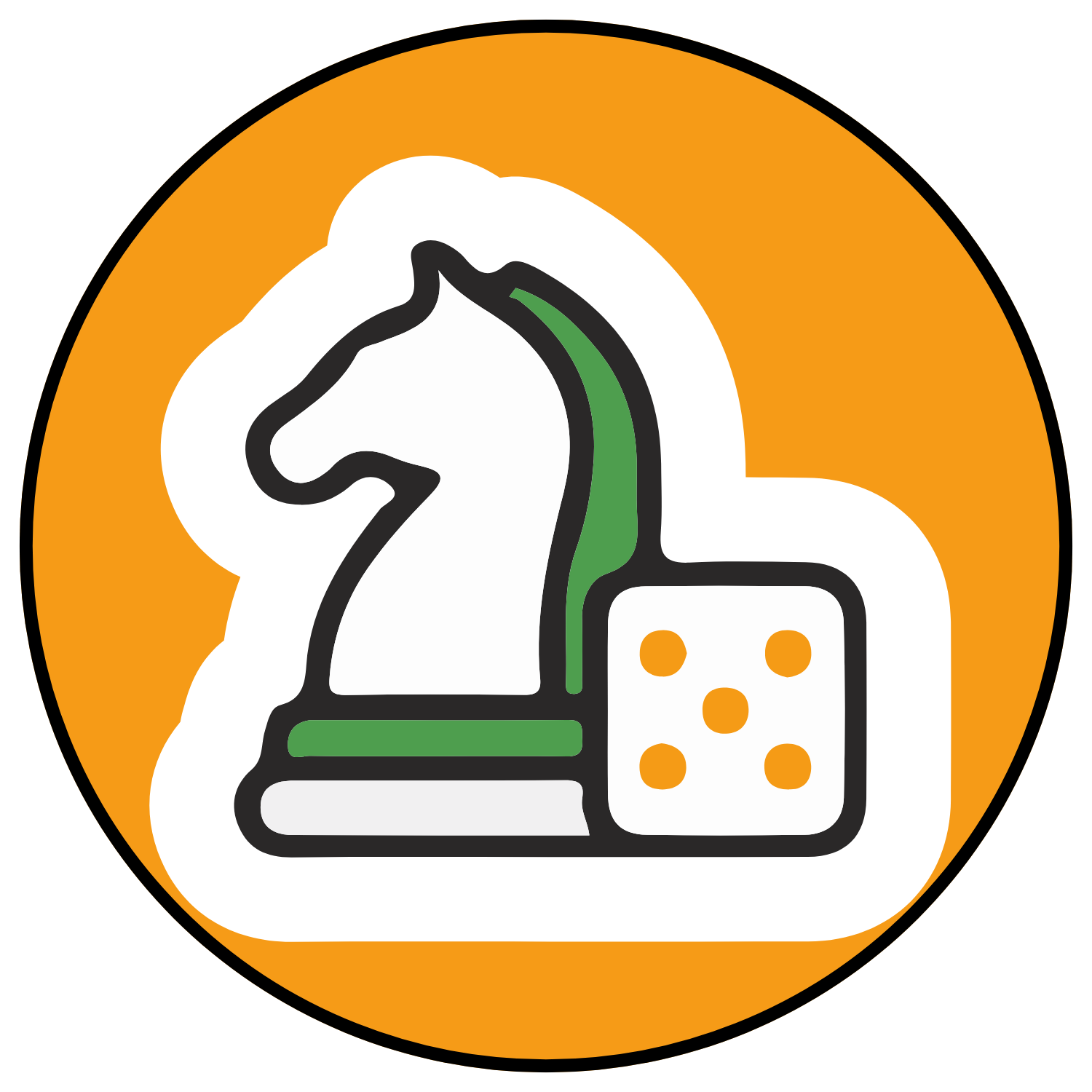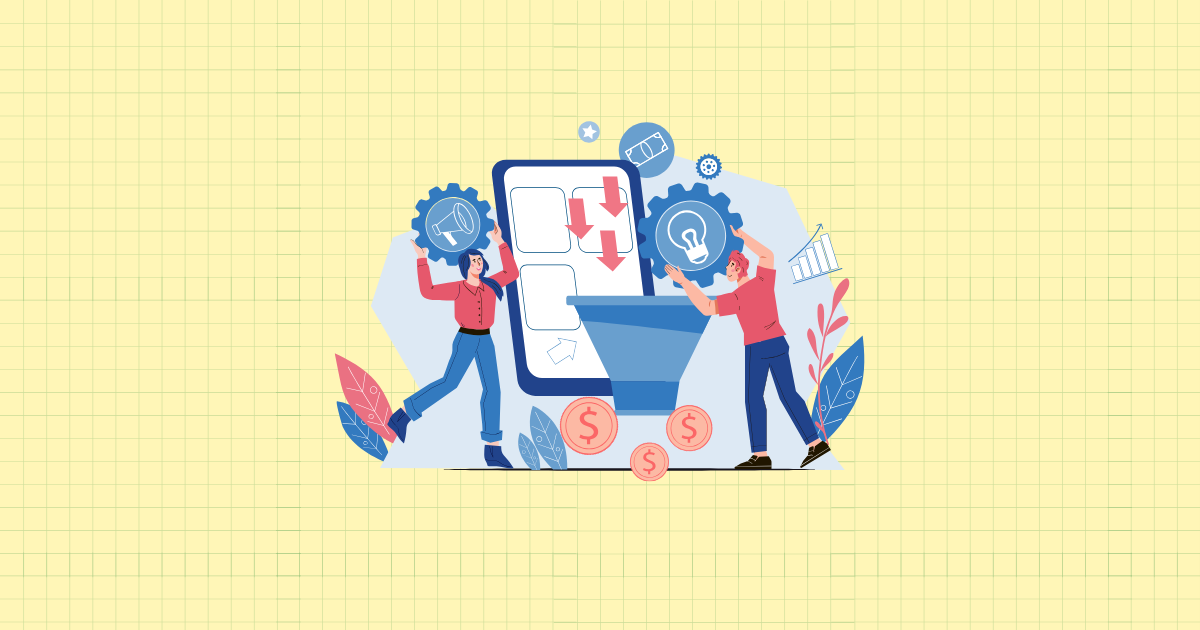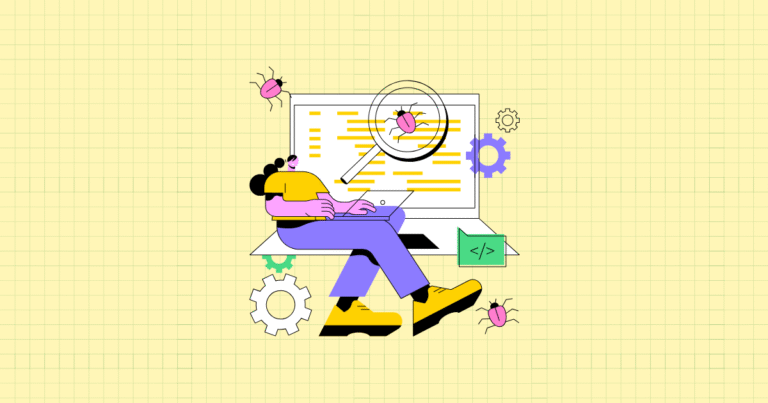The Critical Connection Between Mobile Speed and Shopify Success
Three seconds. That’s all the time you have before a potential customer abandons your store. In the fast-paced world of e-commerce, mobile page speed isn’t just a technical metric—it’s the difference between making a sale and losing a customer forever. With mobile devices now driving over 60% of all e-commerce traffic, your Shopify store’s mobile performance has never been more crucial to your bottom line.
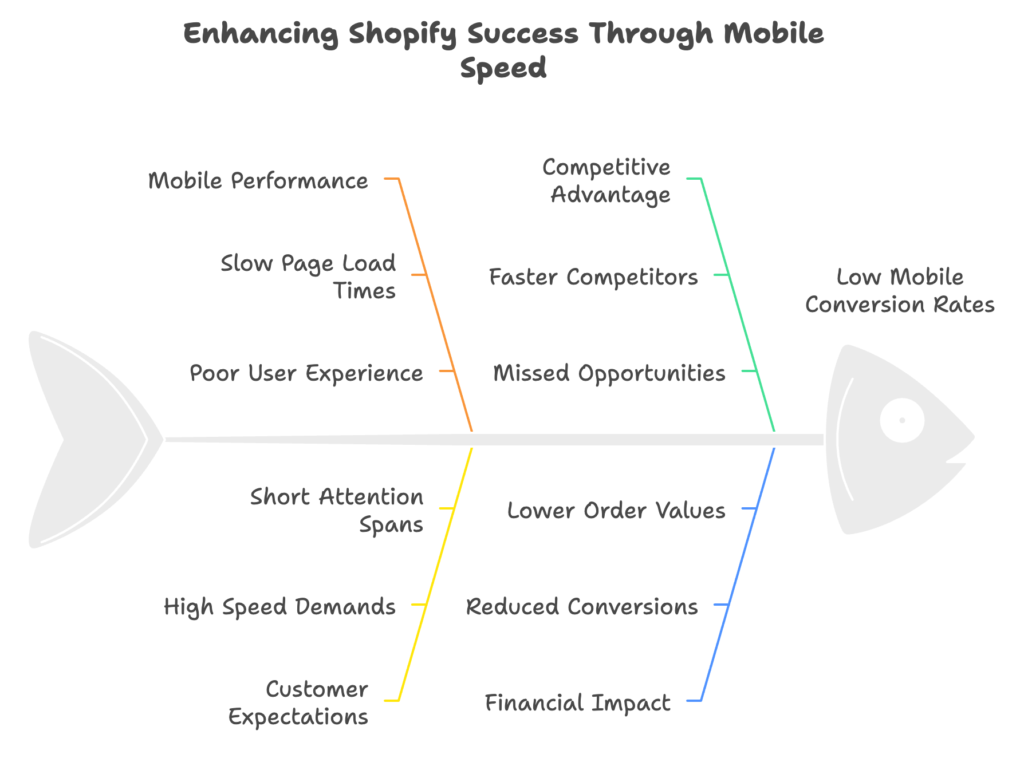
Consider this: a single second delay in page load time can slash your conversion rates by 7%. That seemingly insignificant delay is silently killing your sales while your competitors with faster stores are capturing your would-be customers. The harsh reality? Mobile shoppers are even less patient than desktop users, with attention spans measured in milliseconds, not minutes.
Throughout this guide, you’ll discover exactly how mobile speed impacts your Shopify store’s success, how to measure your current performance, and most importantly, how to implement proven optimizations that will dramatically increase your conversions. Let’s turn your store’s speed from a liability into a competitive advantage.
The Mobile-First Reality for Shopify Stores
Remember when mobile shopping was the future? That future arrived years ago. Today’s e-commerce landscape is definitively mobile-first, with smartphones driving the majority of both traffic and transactions for most Shopify merchants. The numbers tell a compelling story:
- Mobile users now account for over 60% of all e-commerce traffic
- Shopping behavior has shifted dramatically toward mobile-first browsing
- With 5G technology expanding, customer expectations for speed are higher than ever
For Shopify store owners specifically, the mobile landscape presents both opportunities and challenges. Mobile shoppers currently convert at roughly 1.8% compared to desktop’s 3.9%—a significant gap that often stems from poor mobile experiences. Even more concerning is the 85.65% cart abandonment rate on mobile devices, with slow page load times consistently cited as a top reason for abandonment.
What does this mean for you? Every millisecond counts. Your mobile experience is no longer secondary—it’s the primary way customers interact with your brand. This shift requires a fundamental rethinking of how you build, optimize, and grow your Shopify store.
The Business Case for Mobile Speed Optimization
When we talk about mobile speed, we’re really talking about money. Fast-loading Shopify stores don’t just create better user experiences—they generate substantially higher revenue. Let’s break down the direct financial impact:
- A one-second delay reduces conversions by 7%, meaning a store generating $10,000 daily could lose $700 every day due to slow loading times
- Faster stores see higher average order values, with speedy checkout experiences encouraging customers to complete larger purchases
- Page speed directly affects repeat purchase behavior—customers are 52% less likely to return to slow sites
Beyond these immediate revenue impacts, mobile speed has become a crucial competitive advantage in the increasingly crowded Shopify ecosystem. The average Shopify store loads in 4.6 seconds on mobile devices—significantly slower than Google’s recommended 2-second benchmark. This gap represents an opportunity for savvy merchants who prioritize performance.
By 2025, with mobile connectivity continuing to improve, customer expectations have only grown more demanding. The merchants who invest in speed optimization now aren’t just improving metrics—they’re building sustainable businesses that can thrive in this mobile-first world.
Understanding Mobile Page Speed Fundamentals for Shopify
Before diving into optimization strategies, you need to understand what actually makes a Shopify store fast or slow on mobile devices. Speed isn’t a single number but rather a collection of metrics that together create the perception of performance.
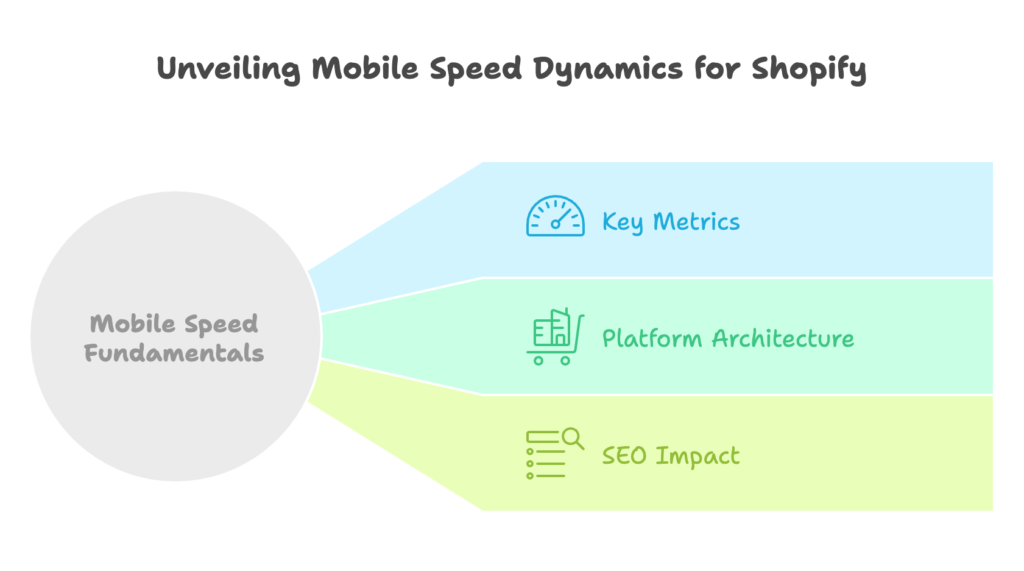
Let’s break down the technical components into practical understanding that will guide your optimization efforts.
Key Mobile Speed Metrics for Shopify Store Owners
Google’s Core Web Vitals have become the gold standard for measuring mobile performance, with three key metrics that directly impact both user experience and search rankings:
Largest Contentful Paint (LCP) measures when the largest content element (usually a hero image or banner) becomes visible to users. Think of this as the moment your store “appears” to be loaded. For optimal user experience, LCP should occur within 2.5 seconds of page load.
First Input Delay (FID) measures how quickly your site responds when a user first interacts with it—like tapping a button or clicking a link. Mobile shoppers expect near-instantaneous responses; anything over 100 milliseconds feels laggy and frustrating. This metric has been increasingly replaced by Interaction to Next Paint (INP), which measures responsiveness throughout the entire user session.
Cumulative Layout Shift (CLS) quantifies how much elements move around as the page loads. We’ve all experienced the frustration of trying to tap a button that suddenly jumps because an image or banner loaded above it. A good CLS score is below 0.1, meaning elements stay mostly where they should as the page renders.
For Shopify merchants specifically, these metrics vary significantly by store type. Fashion and apparel stores with image-heavy designs typically see slower LCP times (averaging 3.8 seconds), while simpler stores like digital products can achieve much faster performance (around 2.2 seconds). Your store type matters when establishing realistic benchmarks.
How Shopify’s Platform Architecture Affects Mobile Speed
Shopify’s architecture provides both advantages and limitations when it comes to mobile performance. On the positive side, all Shopify stores benefit from the platform’s robust global Content Delivery Network (CDN), which places your store’s static assets (images, CSS, JavaScript) on servers close to your customers, reducing travel time and improving speed.
However, Shopify’s server response time—the time it takes for Shopify’s servers to begin sending your page data—can vary significantly. Standard Shopify plans typically see server response times between 400-800ms, while Shopify Plus merchants benefit from priority infrastructure with responses averaging 200-400ms. This difference might seem small, but it forms the foundation of all subsequent loading processes.
Shopify’s theme architecture, built on the Liquid templating language, also plays a crucial role in mobile performance. Liquid must be processed on Shopify’s servers before HTML is sent to the browser, creating an inherent processing requirement that can impact speed. This is why theme optimization becomes so critical for Shopify stores seeking peak performance.
Mobile Speed’s Impact on SEO for Shopify Stores
Since Google’s shift to mobile-first indexing, your Shopify store’s mobile performance directly influences how well you rank in search results. Page speed has been an official ranking factor since 2018, but with the introduction of Core Web Vitals as ranking signals in 2021, its importance has amplified significantly.
Poor mobile performance creates a double penalty: first, Google may rank your pages lower in results; second, the traffic you do receive is more likely to bounce due to frustration with slow loading times. This creates a negative feedback loop that can severely limit organic growth.
Local SEO is particularly sensitive to mobile performance. When shoppers search for products “near me” or with local intent, Google heavily prioritizes mobile-friendly, fast-loading sites since these searches overwhelmingly come from smartphones. If your Shopify store targets local customers, speed optimization becomes even more crucial for capturing this high-intent traffic.
Voice search, which continues to grow in popularity, also strongly favors fast-loading sites. When digital assistants like Siri or Alexa recommend products or stores, their algorithms heavily weight page speed in their recommendations, knowing users expect near-instantaneous results from voice queries.
Measuring and Analyzing Your Shopify Store’s Mobile Speed
You can’t improve what you don’t measure. Before implementing any optimizations, you need an accurate assessment of your current mobile performance.
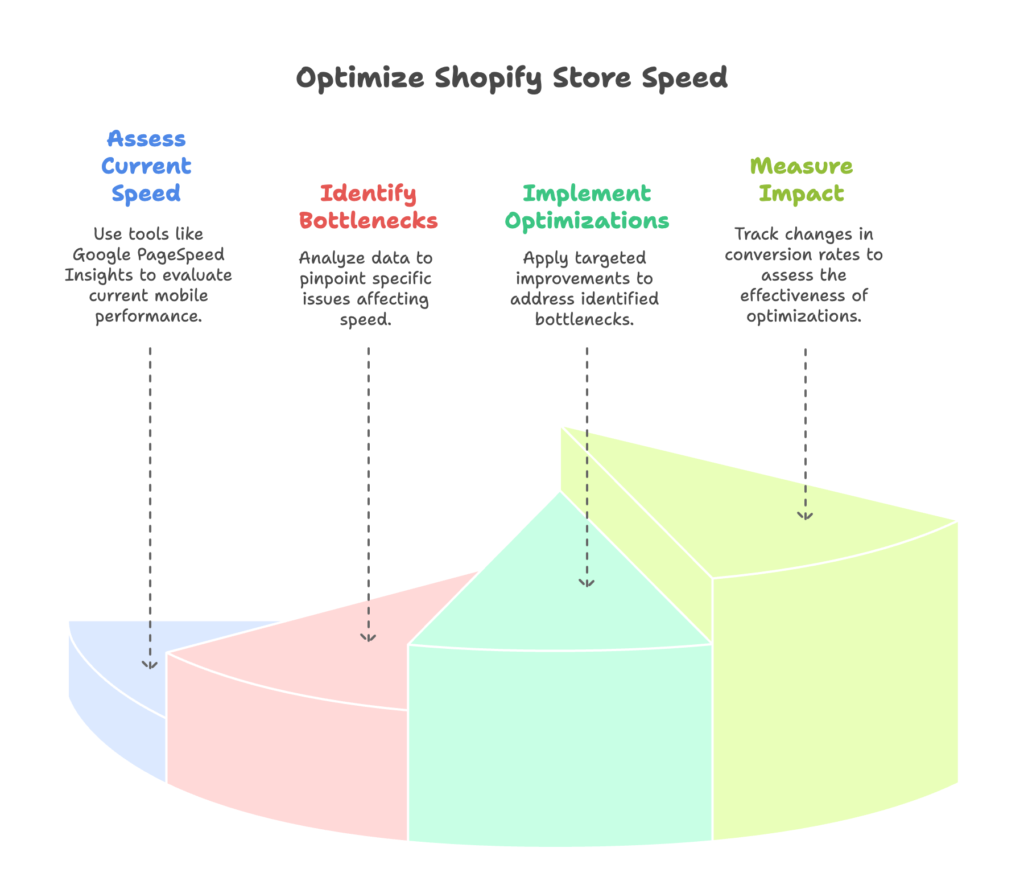
Let’s explore the tools and methodologies that will give you reliable data to guide your speed improvement efforts.
Essential Testing Tools for Shopify Merchants
Google PageSpeed Insights remains the industry standard for mobile performance testing. It provides both field data (real-world performance from Chrome users who’ve visited your site) and lab data (controlled tests of your current page). For Shopify stores, the field data is particularly valuable as it shows how actual customers experience your site across different devices and connection speeds.
To use PageSpeed Insights effectively, test multiple pages—not just your homepage. Your product pages, collection pages, and checkout experience all contribute to conversion rates and should be evaluated separately. Pay special attention to the “Opportunities” and “Diagnostics” sections, which provide Shopify-specific recommendations.
Shopify’s Online Store Speed Report, available in your admin dashboard, offers platform-specific insights that general tools can’t provide. This report analyzes your theme’s performance and provides tailored recommendations based on Shopify’s understanding of its own platform. It’s particularly valuable for comparing your store’s performance against similar Shopify merchants—giving you competitive benchmarks within your industry.
For deeper technical analysis, WebPageTest provides comprehensive waterfall charts showing exactly how each element loads on your page, identifying precise bottlenecks in the loading process. Meanwhile, Chrome DevTools allows you to simulate specific mobile devices and network conditions—perfect for testing how your store performs on older devices or slower connections that many of your customers may be using.
Establishing Your Shopify Store’s Speed Baseline
Effective optimization requires a structured approach to measurement. Start by documenting your current performance across these key metrics:
- LCP, FID/INP, and CLS scores for your homepage, top collection pages, and best-selling product pages
- Total page size in MB for each page type
- Number of HTTP requests required to load each page
- Server response time (Time to First Byte)
Create a regular testing schedule—weekly measurements are ideal for stores actively working on optimization. Consistent testing conditions are crucial for reliable data; always test at the same time of day and use the same network conditions for comparable results.
As you establish your baseline, identify your critical speed bottlenecks. These typically fall into four categories: server response issues, render-blocking resources in your theme, unoptimized assets (particularly images), and third-party app impact. Document each bottleneck’s severity to help prioritize your optimization efforts.
Connecting Speed Metrics to Conversion Data
The most compelling reason to invest in speed optimization is its direct impact on your bottom line. Use Shopify Analytics to correlate speed improvements with conversion metrics by creating segments for mobile users and tracking how conversion rates change as you implement optimizations.
For the most accurate assessment, implement A/B testing when possible. Rather than making all optimizations simultaneously, implement them in phases and measure the impact of each change. For example, after optimizing images, monitor conversion rates for 1-2 weeks before implementing JavaScript optimizations. This methodical approach allows you to identify which specific optimizations deliver the highest ROI for your particular store.
Calculate the financial impact of each optimization by multiplying your additional conversion percentage by your average order value and visitor count. This calculation transforms technical metrics into compelling business cases—essential for justifying further investment in performance optimization.
Fundamental Mobile Speed Optimizations for Shopify Stores
With your performance baseline established, it’s time to implement the optimizations that will have the most significant impact on your mobile speed. Let’s focus on the fundamental improvements that deliver the highest ROI for most Shopify merchants.
Image Optimization Strategies for Shopify
Images typically account for 50-80% of a Shopify page’s total weight, making them the single most important element to optimize. Start with proper compression—every image on your store should be compressed before upload using a tool like TinyPNG, which can reduce file sizes by 50-80% without noticeable quality loss.
For existing stores with hundreds or thousands of images, this process can be daunting. Prioritize your highest-traffic pages first: homepage, top collections, and best-selling products. Once these are optimized, work through remaining product images systematically.
Next-generation image formats like WebP offer roughly 30% smaller file sizes compared to traditional JPGs at equivalent quality. While Shopify now automatically serves WebP versions of your images when browsers support them, you can further optimize by:
- Using Shopify’s built-in image size parameters like
?width=800to serve appropriately sized images - Implementing proper responsive images using the
srcsetattribute to deliver different sizes to different devices - Maintaining consistent image dimensions for product photos to prevent layout shifts during loading
Lazy loading—delaying the loading of images until they’re about to enter the viewport—can dramatically improve initial page load times. Shopify now includes native lazy loading for product images, but you may need to implement it manually for custom sections using the loading="lazy" attribute.
Theme Optimization for Mobile Speed
Your Shopify theme fundamentally determines your store’s performance ceiling. The theme’s code structure, JavaScript libraries, and CSS implementation all significantly impact loading times, particularly on mobile devices with limited processing power.
If you’re selecting a new theme, prioritize performance in your decision-making process. Shopify’s Dawn theme, built with performance as a primary goal, provides an excellent starting point with significantly faster loading times than most third-party themes. If you’re committed to your current theme, consider these optimizations:
- Implement critical CSS by identifying and inlining the styles needed to render above-the-fold content. This allows visible content to appear quickly while the rest of your styles load asynchronously.
- Minimize JavaScript impact by deferring non-essential scripts and removing unused code. Many themes include jQuery and other libraries that may not be necessary for your specific store functionality.
- Streamline custom code by auditing and removing any outdated customizations that may be slowing down your store.
For stores with the resources for custom development, a performance-focused theme rebuild can yield dramatic speed improvements. By focusing exclusively on the functionality your store actually needs, custom themes can eliminate the bloat common in multipurpose themes designed to support countless use cases.
Shopify App Optimization for Mobile Performance
Each app you install potentially adds JavaScript, CSS, and sometimes additional HTTP requests to your store. While apps extend functionality, they often come with significant performance costs. A systematic app audit can reveal surprising speed drains:
Start by temporarily disabling apps one by one (in a development store or during low-traffic periods) and measuring the performance impact of each. You’ll often find that a small number of apps contribute disproportionately to loading times. Consider alternatives for the most problematic apps, or reach out to developers about performance concerns.
For essential third-party scripts from apps, social media, or analytics tools, implement proper loading strategies:
- Use the
asyncattribute for scripts that don’t need to load in a specific order - Use the
deferattribute for scripts that should execute after the page has finished parsing - Consolidate tracking scripts using Google Tag Manager to reduce individual HTTP requests
Remember that each app serves a business purpose, so optimization decisions should balance functionality needs against performance costs. Sometimes, accepting slightly slower loading times is worth the conversion benefits a particular app provides.
Advanced Mobile Speed Strategies for Shopify
Once you’ve implemented the fundamental optimizations, you can achieve further performance gains through advanced strategies. These techniques often require more technical expertise but can provide the edge needed to achieve exceptional mobile performance.
Implementing Browser Caching for Shopify Stores
Browser caching instructs visitors’ browsers to store static assets locally, dramatically speeding up repeat visits. While Shopify automatically handles some caching, you can enhance this through strategic implementation:
Shopify’s CDN already applies caching headers to static assets like images, CSS, and JavaScript files. However, you can extend caching benefits by:
- Using consistent URLs for images and other assets to improve cache hit rates
- Implementing versioning strategies for scripts and stylesheets to ensure updates are properly delivered
- Minimizing the use of no-cache headers except where absolutely necessary (like for personalized content)
For stores with international audiences, consider how geographic distance affects performance. Although Shopify’s CDN has global reach, customers in regions far from data centers may experience higher latency. Test your store’s performance from different global locations using WebPageTest’s multiple testing locations feature, and consider additional performance optimizations for regions showing slower response times.
Mobile-First Design Principles for Speed
True mobile optimization goes beyond technical improvements to embrace mobile-first design principles. Rethinking your user interface with mobile constraints in mind can significantly improve both perceived and actual performance:
Simplify navigation structures by reducing menu complexity and implementing touch-friendly interfaces. Multi-level dropdown menus that work well on desktop often create friction on mobile. Consider a simplified mobile menu showing only top-level categories with easy access to search functionality.
Optimize tap targets to prevent frustrating misclicks. All interactive elements should be at least 44×44 pixels with adequate spacing between them. This not only improves usability but can reduce layout shifts that negatively impact Core Web Vitals scores.
Streamline the checkout process specifically for mobile users. Each additional field and step disproportionately impacts mobile conversion rates. Implement Shop Pay or Apple Pay to enable one-tap checkout, and carefully review your checkout flow on various mobile devices to identify and eliminate friction points.
Remember that mobile users often shop in short bursts while multitasking or on the go. Design for interrupted sessions by ensuring form data persists and cart contents are easily recoverable, creating a seamless experience across multiple sessions.
Accelerated Mobile Pages (AMP) for Shopify
Accelerated Mobile Pages (AMP) is an open-source framework designed to create ultra-fast mobile experiences. While somewhat controversial in the development community, AMP can provide significant speed benefits for certain Shopify store components:
For Shopify stores, AMP implementation typically focuses on content-heavy pages like blog posts and landing pages rather than the entire shopping experience. Several Shopify apps facilitate AMP implementation, automatically generating AMP versions of your content pages.
The speed benefits of AMP come from strict limitations on JavaScript, standardized components, and Google’s AMP cache, which preloads content. These constraints create pages that load nearly instantaneously on mobile devices, potentially increasing engagement with your content marketing.
When implementing AMP, ensure proper tracking is configured to maintain analytics continuity between AMP and non-AMP pages. Monitor conversion paths involving AMP content to verify that the simplified experience is actually improving user progression toward purchase, not just initial content consumption metrics.
Implementing a Holistic Mobile Speed Optimization Strategy
Individual optimizations can yield significant improvements, but a strategic approach to mobile performance delivers more sustainable results. Let’s explore how to develop and implement a comprehensive speed optimization strategy for your Shopify store.
Prioritizing Optimizations for Maximum Impact
Not all optimizations deliver equal value, and with limited resources, prioritization becomes crucial. Develop a speed optimization roadmap that balances quick wins with more substantial long-term improvements:
- Quick wins (1-2 weeks): Image compression, basic JavaScript optimizations, and app audit
- Medium-term improvements (1-2 months): Theme optimizations, critical CSS implementation, and advanced image loading techniques
- Long-term strategies (3+ months): Custom theme development, headless implementation, or significant architectural changes
Prioritize based on potential impact, implementation complexity, and available resources. A small store with limited development capabilities might focus exclusively on image optimization and app rationalization—often achieving 30-40% speed improvements with these changes alone. Larger operations with development teams can pursue more comprehensive optimizations, potentially cutting loading times by 60-70%.
Calculate the ROI for each optimization by estimating the conversion impact and implementation cost. For example, if image optimization costs $500 (either in tools or time) but increases conversions by 0.3% for a store generating $20,000 monthly, that represents a $60 monthly revenue increase—paying back the investment in approximately 8 months while continuing to deliver returns indefinitely.
Maintaining Mobile Speed Through Growth
As your Shopify business grows, maintaining performance becomes increasingly challenging. More products, more traffic, and more features all threaten to degrade speed over time. Implement proactive strategies to preserve your performance gains:
Establish a performance budget that sets maximum limits for page size, request counts, and loading times. Each new feature or content addition must fit within this budget, forcing conscious decisions about performance tradeoffs. Document your budget in a shared resource accessible to all team members who influence your store’s development.
Implement regular speed monitoring, ideally with automated testing that alerts you to performance regressions. Tools like Google Lighthouse CI can be integrated into development workflows to catch performance issues before they reach production. At minimum, schedule monthly manual tests of key pages to monitor trends in your Core Web Vitals and other performance metrics.
As product catalogs grow, collection and search page performance often suffers first. Implement pagination, filtering optimization, and potentially infinite scroll (with proper implementation) to maintain speed even as your product selection expands. Consider lazy-loading product information and images for large collections, showing full details only as users scroll into view.
Future-Proofing Your Shopify Store’s Mobile Performance
The e-commerce performance landscape continually evolves with new technologies, metrics, and customer expectations. Future-proof your Shopify store by staying ahead of emerging trends:
Progressive Web App (PWA) capabilities are increasingly accessible for Shopify stores. While full PWA implementation often requires custom development, you can incrementally adopt PWA features like offline browsing, app-like interactions, and push notifications through specialized Shopify themes or headless implementations.
Core Web Vitals evolution continues as Google refines its performance metrics. The transition from FID to INP (Interaction to Next Paint) demonstrates this ongoing development. Stay informed about metric changes and their implications for your optimization strategy by following the Chromium blog and Google’s developer updates.
Performance-centered development should become a foundational principle rather than an afterthought. Establish clear performance requirements for all new features, theme updates, or app installations. By embedding performance consciousness throughout your organization, you’ll avoid the accumulated technical debt that eventually requires resource-intensive reoptimization projects.
Case Studies: Mobile Speed Optimization Success on Shopify
Abstract principles become concrete through real-world examples. Let’s examine three distinct cases where Shopify merchants achieved remarkable results through mobile speed optimization.
Small Business Transformation
A boutique clothing store with approximately 200 products was struggling with a 6.8-second mobile load time and an anemic 0.9% mobile conversion rate. With limited technical resources and a modest budget, they focused on accessible optimizations:
- Compressed all product images, reducing average image weight by 68%
- Switched from a feature-heavy premium theme to Shopify’s Dawn theme
- Removed 4 redundant apps, retaining only those providing essential functionality
- Implemented lazy loading for below-the-fold content
These relatively simple changes reduced mobile loading time to 2.7 seconds—a 60% improvement. The impact on business performance was immediate and substantial: mobile conversion rates increased to 2.1% (a 133% improvement), and overall revenue grew by 47% within three months.
Key takeaway: Even without specialized development resources, significant performance gains are achievable through diligent application of fundamental optimizations.
Enterprise-Level Shopify Plus Optimization
A well-established home goods retailer on Shopify Plus with 2,000+ products and international sales faced more complex challenges. Their mobile experience suffered from inconsistent performance across regions, especially during high-traffic sales events when load times would increase by 40-50%.
Their comprehensive approach included:
- Custom theme development focused exclusively on performance, removing all unused code
- Advanced image optimization workflow including automated WebP conversion
- Implementation of predictive prefetching for commonly navigated paths
- Conversion of key interactive elements to HTML and CSS instead of JavaScript
- Regional performance optimization for international markets
The results proved transformative: global average mobile load time decreased from 4.2 seconds to 1.8 seconds, mobile conversion rates increased by 86%, and perhaps most importantly, the site maintained consistent performance even during flash sales that generated 10x normal traffic volume.
Key takeaway: Enterprise-level optimization requires deeper technical intervention but delivers proportionally larger benefits, especially for high-traffic, international stores.
Seasonal Business Speed Preparation
A specialty retailer generating 40% of annual revenue during the November-December holiday season implemented a targeted optimization strategy specifically for peak traffic periods:
- Developed a streamlined “holiday mode” theme variation with simplified navigation and reduced animations
- Implemented temporary image simplification, reducing quality settings during peak periods
- Created dedicated high-performance landing pages for promotional campaigns
- Temporarily disabled non-essential third-party scripts during highest traffic periods
- Implemented queue management for checkout processes during flash sales
This preparation paid dividends: despite a 175% increase in mobile traffic during Black Friday/Cyber Monday compared to the previous year, average page load times increased by only 15% (compared to 85% slowdowns in previous years). The maintained performance contributed to a 112% year-over-year revenue increase for the holiday season.
Key takeaway: For seasonal businesses, performance optimization should reflect business cycles, with more aggressive strategies during peak periods when speed directly impacts revenue at the largest scale.
Conclusion: Actionable Next Steps for Your Shopify Store
Mobile speed optimization isn’t a one-time project but an ongoing commitment to delivering exceptional shopping experiences. Let’s conclude with concrete next steps to improve your Shopify store’s mobile performance.
Quick Wins for Immediate Implementation
Focus first on these three high-impact optimizations that deliver substantial improvements with relatively low implementation complexity:
- Comprehensive image optimization: Compress all images using TinyPNG or similar tools, resize oversized images to appropriate dimensions, and implement lazy loading. This single step often improves loading times by 30-40%.
- JavaScript optimization: Defer non-critical scripts, remove unused third-party code, and ensure proper async/defer attributes are applied to remaining scripts.
- App rationalization: Audit all installed apps, remove any that aren’t actively contributing to your business, and seek lighter alternatives for essential but resource-intensive integrations.
For most Shopify stores, these three optimizations can be implemented within 1-2 weeks, even with limited technical resources. The performance gains typically justify the investment many times over through improved conversion rates.
When deciding between DIY optimization and professional assistance, consider both your technical capabilities and opportunity costs. Image optimization and basic app audits can be handled by most merchants independently. More complex theme optimizations or custom development may warrant professional support if your team lacks specialized expertise.
Creating Your Custom Mobile Speed Optimization Plan
Develop a structured optimization plan tailored to your specific store and business requirements:
- Assessment: Test your current performance using PageSpeed Insights and Shopify’s Speed Report. Document scores for your homepage, top collection pages, and best-selling product pages.
- Competitive analysis: Compare your performance against direct competitors and industry benchmarks to identify your relative standing and improvement goals.
- Goal setting: Establish specific, measurable performance targets—for example, “Achieve an LCP under 2.5 seconds for all product pages” or “Reduce mobile bounce rate by 25% through speed improvements.”
- Prioritized roadmap: Create a timeline for implementing optimizations, starting with high-impact/low-effort improvements and progressing to more complex optimizations.
- Monitoring plan: Establish regular testing intervals and KPI tracking to measure both technical improvements and business impacts.
Remember that mobile speed optimization delivers cumulative benefits. Each incremental improvement not only enhances user experience and conversions but also strengthens your competitive position and search visibility. In an increasingly mobile-first world, performance isn’t just a technical concern—it’s a fundamental business advantage that directly impacts your Shopify store’s growth and profitability.
The path to a lightning-fast mobile experience starts with a single optimization. Begin today, and watch as improved performance transforms browsers into buyers and occasional shoppers into loyal customers.
References
- Shopify. (2025). “Online Store Speed Report Documentation.” Shopify Help Center. https://help.shopify.com/en/manual/online-store/store-speed
- Google. (2025). “Mobile Page Speed: Impact on E-commerce Conversion Rates.” Think with Google Research Report. https://www.thinkwithgoogle.com/marketing-strategies/app-and-mobile/mobile-page-speed-statistics/
- Smith, J. (2025). “The Impact of Page Speed on Shopify Store’s Conversion Rates.” LinkedIn Pulse. https://www.linkedin.com/pulse/impact-page-speed-your-shopify-stores-conversion-rates-5wgic
- Instant.so. (2025). “9 Shopify Speed Optimization Tips for Your Online Store Performance.” Instant Blog. https://instant.so/blog/9-shopify-speed-optimization-tips-for-your-online-store-performance
- Go Fish Digital. (2025). “A Guide To Shopify Speed Optimization For 2025.” Go Fish Digital Blog. https://gofishdigital.com/blog/shopify-speed-optimizations/
Ready to supercharge your Shopify store’s conversion rates with perfectly optimized mobile experiences? Growth Suite is a Shopify app that helps you monitor performance, analyze customer behavior, and create compelling time-limited offers that drive conversions. With intelligent discount campaigns that adapt to each visitor’s behavior, Growth Suite helps you capture sales that would otherwise be lost to slow performance and abandoned carts. Install it with a single click and start seeing results today!
